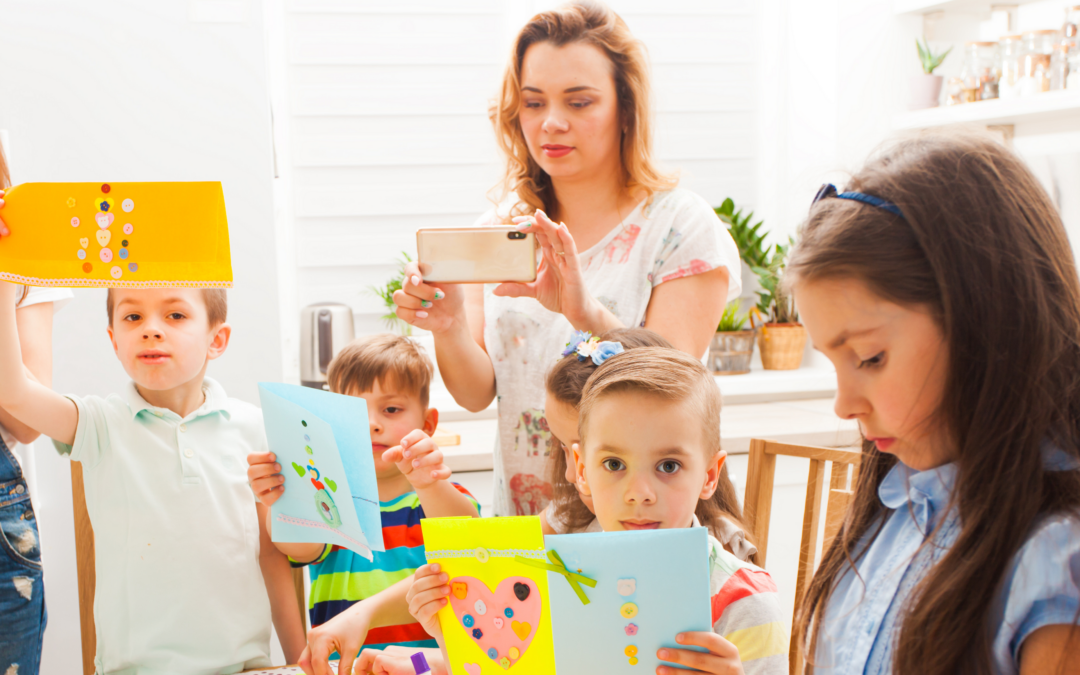In the realm of early childhood development, the creative exploration offered by crafts serves as a gateway to learning and self-expression. Engaging children in craft activities not only nurtures their imagination but also cultivates vital skills across various developmental domains. Let’s embark on an exploration of age-appropriate craft ideas that spark creativity and foster learning for children of different age groups.
Understanding the Significance of Crafts in Child Development
Craft activities encompass a spectrum of benefits, stimulating fine motor skills, fostering creativity, enhancing problem-solving abilities, and promoting self-confidence. They provide children with a platform for self-expression and imaginative exploration.
Craft Ideas Across Developmental Stages
Early Years (Ages 2-5)
For toddlers and preschoolers, craft activities involve simple, hands-on experiences that stimulate sensory exploration and creativity:
- Finger Painting: Introducing vibrant finger paints allows them to explore colors and textures while developing fine motor skills.
- Playdough Creations: Offering playdough with cookie cutters or child-safe tools enhances creativity and hand-eye coordination.
- Collage Making: Allowing them to create collages using torn paper, feathers, and fabrics encourages artistic expression.
Middle Childhood (Ages 6-11)
As children grow, craft activities can become more complex and challenge their creativity and problem-solving skills:
- Origami: Teaching them origami folds to create animals or objects sharpens focus, patience, and fine motor abilities.
- DIY Science Projects: Conducting simple science experiments like making a volcano or growing crystals engages their curiosity and critical thinking.
- Jewelry Making or Sewing: Introducing basic sewing skills or beadwork promotes creativity and dexterity.
Adolescence (Ages 12+)
Teenagers benefit from craft activities that allow for more intricate designs and encourage self-expression:
- Sketching or Painting: Providing quality art supplies and encouraging them to express emotions or ideas through art nurtures creativity.
- DIY Projects: Engaging in more complex DIY projects like building model kits or constructing basic furniture hones their problem-solving and planning skills.
- Creative Writing or Journaling: Encouraging them to explore poetry, short stories, or personal journaling channels their creativity and self-reflection.
Strategies for Engaging and Educational Crafts
Promoting Open-Ended Exploration: Allowing children to explore materials freely encourages creativity and divergent thinking.
Encouraging Process Over Product: Emphasizing the joy of creating rather than achieving a perfect end result fosters confidence and creativity.
Offering Diverse Materials and Tools: Providing varied art supplies, recyclable materials, and age-appropriate tools supports exploration and creativity.
Incorporating Learning Objectives: Introducing educational themes into craft activities, such as history, science, or storytelling, adds a learning dimension.
Case Studies in Engaging Craft Activities
Case 1: Alex’s Science Experiment (Age 8)
Alex conducted a simple science experiment with household items, creating a baking soda volcano. This activity not only fascinated Alex but also taught him about chemical reactions and geological formations.
Case 2: Sarah’s Creative Writing (Age 14)
Sarah engaged in creative writing sessions, exploring different genres and expressing her thoughts and emotions. Through journaling and storytelling, Sarah discovered a newfound passion for creative expression.
Nurturing Creativity and Learning Through Crafts
Craft activities serve as invaluable tools in fostering creativity, skill development, and self-expression in children across different age groups. By engaging children in age-appropriate craft projects, caregivers and educators contribute significantly to their holistic development, nurturing a love for learning and creative exploration that lasts a lifetime.
In the realm of early childhood development, the creative exploration offered by crafts serves as a gateway to learning and self-expression. Engaging children in craft activities not only nurtures their imagination but also cultivates vital skills across various developmental domains. Let’s embark on an exploration of age-appropriate craft ideas that spark creativity and foster learning for children of different age groups.
If you are a nanny and are interested in learning more about caring for children, check out the Nanny Institute’s Professional Childcare Certification Program.


Recent Comments